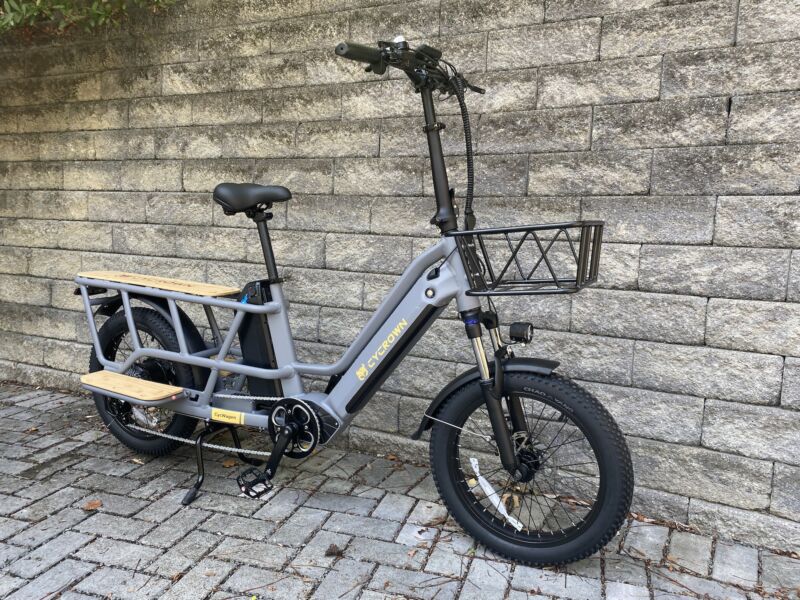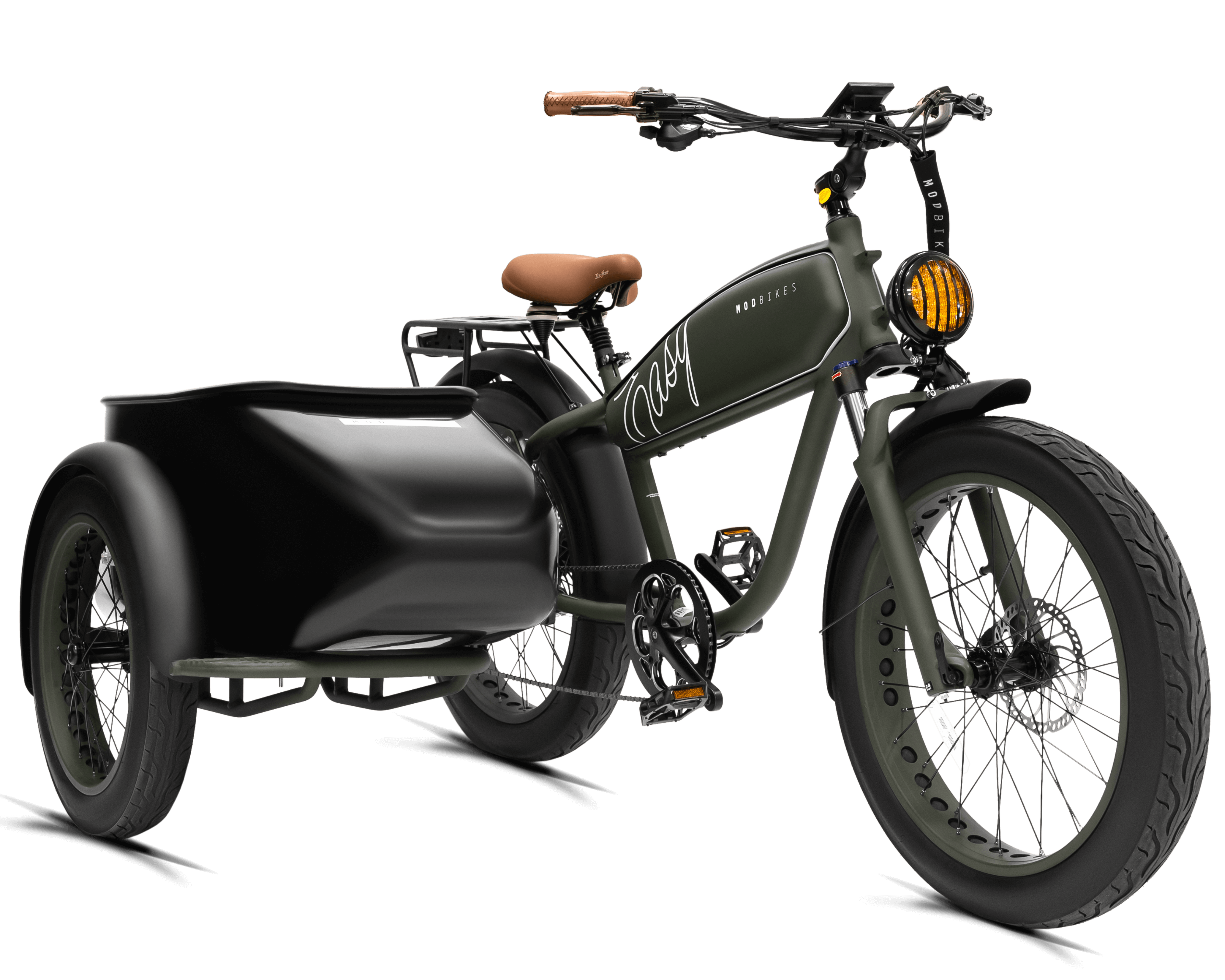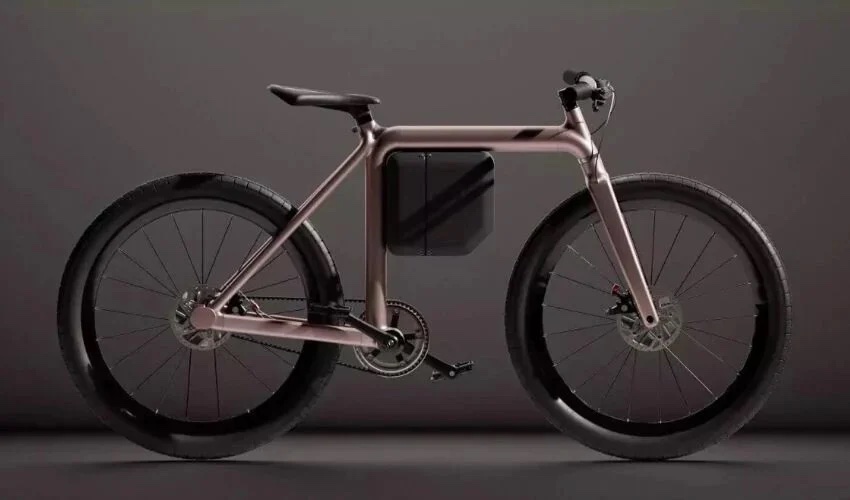The e-bike category became saturated in the two years following the depths of the Covid 19 pandemic. This has resulted in a huge variety of models consumers can choose, not least from the dozens of new bike brands that have jumped into the space that legacy bike brands have been slow to fill.
Hence, brands compete by developing 1. technical advantages that they hope will be more than gimmicks and 2. business models that ensure survival (at the least) in an extremely competitive environment.
Contents
Cargo Bikes: Low(er) Center of Gravity; Tires
Cargo bikes are probably the most contested category of e-bike since they offer the promise to replace the most common car journey (< 5km) with environmentally friendly convenience.
CoG
Cargo is heavy and thus potentially destabilizing which is why cargo bikes’ bins sat on the plane of the wheel axles with the rider perched above on the seat—a higher CoG but counterbalanced by the potentially much heavier load—such as a couple of kids—in the bin.
Long tail eCargo bikes have become the cargo bike of choice for many. The load sits on a plane a smaller distance below the rider; the rack stretches out to the rear and often includes a rack over the front wheel, a further source of destabilization. Since these rear and front racks are higher than bins, the design challenge is to keep the CoG as low as possible, which, however, normally does not go below the top of the wheel—weight positioned closer to the ground results in greater stability.

Cycrown’s CycWagon seemingly aims to lower the CoG as far as possible to the point where the cranks barely clear the pave (reduction of wheel size can only go so far). Just remember to stop pedaling while transiting a corner otherwise your pedals will scrape the pavement. And that’s a sound reason why this design aspect is not a priority for other brands despite the handling benefits of a low CoG when carrying a load—and the heavier the load, the greater the effect. Continually catching pedal on the ground is minimally annoying and has the potential to send a rider crashing to the ground.
Shorter cranks, however, would mitigate this problem. Because riders will be throttling up or down most of the time rather than pedaling, road impacts would be few. Although no one is suggesting such crank modification on the CycWagon or any other low profile low tail model, it would seem to be a possible design direction.
Fat(ish) Tire Trend—Advantages & Disadvantages
Wider tires are now standard across all bike categories, including non electric models. Narrower profile tires only truly matter in the pro peloton. Although resistance is equal or lower on wider tires, the slight aero disadvantage compounds over the thousands of kilometers that pros normally cover in a race which is why they tend to prefer narrow profile tires (but not universally: 28-30mm are common and some ride up to 50mm depending on the context). But how wide do you need to go?

A few years ago fat bikes were a distinct category of e-bike. And we’re talking about massive 20” OD tire—classic fat bike—on larger rims.
Classic fat bikes are still a thing. But the trend has been to reduce wheel diameter along with tire width to a degree, giving the market e-bikes with relatively large tires that can’t be classified as “Fat Bikes”.
Fat tires have a number of advantages which outweigh the disadvantages. There is an overall feeling of stability, even if the tire tread noise on tarmac makes you feel like you have an escort of hornets. A fat tire is less likely to be pulled into a rut—especially a parallel rut!—on a poor quality surface. And the ride is smoother.
On the negative side, increased rolling resistance means a battery won’t last as long, although with dual battery models increasingly becoming available, the problem is mitigated. They’re heavier; but on an e-bike the weight penalty is cancelled out by the power assist. Rough tread can be slippery on slick tarmac surfaces. Arguing that fat tires do not fit into bike racks is not convincing since stands are ubiquitous and a bike can be secured to most solid objects assuming the appropriate locking device.
If you look at the market as a savage ecosystem where the survival of the fittest rules (or at least, you do enough to gain a critical mass of support within a particular niche), the market has accepted ful-on fat tires bikes whist sanctioning the widespread adoption of wide to very wide tires across most e-bike categories.
Lightweight and Super Lightweight
Initially, weight was never a key design consideration for e-bikes. The bike industry has only just emerged from some two decades of an obsession with weight reduction in frames and components—which justified brands demanding a premium for those products . . . the lighter (and stronger) the more expensive—the weight of a hefty e-bike driven by a motor is largely cancelled out. Your grandma can leave you coughing dust as she leisurely powers up the inclines on, effectively, a tank.
Nevertheless, the key advantage of a lighter e-bike over a heavier model is maneuverability. That goes doubly for a folding e-bike: once folded you’ll maybe want to move it up a flight of stairs, fit it into a storage space, or lift it into a storage area. So the lighter it is, the easier the task becomes.

The Ado Air Carbon is technically at the forefront of light folding e-bikes. Battery in the seat post, belt drive, compact Bafang hub drive, with fenders and racks as optional extras.
Being at the forefront also means taking the price point into consideration. At €1,999 the AAC certainly presents prima facie good value. However, a full evaluation only comes over time. Carbon is a fickle material. Any substantial knocks or bumps, let alone a substantial collision, demands a professional examination of the frame for minute fractures. Carbon fails rarely; when it does, it normally breaks in an instant. In the case of the Ado, rider safety is hugely dependent on the integrity of the top tube which has no connecting support as in the standard twin diamond design.
Super-light e-bikes have evolved over a short time. Concentrated in the high performance eMTB segment, 20kg is standard with some models going as low as 16kg. An obsession with weight in this segment is justified by the need for finely tuned performance.
The argument for going SL in other categories, though, comes down to convenience as a redefining of “performance” for everyday users. SL cargo bikes would be a breakthrough but more realistically folding bikes are a prime candidate for a range of SL models. They would not be cheap. But with the lightest folding models weighing in at around 13kg, a sub-10kg folding bike would offer fabulous utility. Or rather “agility”—consumers being able to store e-bikes where they need to without tearing hamstrings or putting out backs is as yet an underexploited benefit.
Cruiser e-bikes
Putting a motor on a cruiser bike, adding oversized wheels (in line with the trend towards fatter tires yet not a “fat” bike) along with a rear rack, gives you a stylish (longish tailed) cargo bike that does not look like a cargo bike.
Or another way to think of it is as a variety of city bike that can handle adventure and a bit of cargo on the side. The “tank” hides the battery and hefty rear wheel allows the hub drive to be inconspicuous.

The Mod Easy Side Car 3 covers all that with the optional addition of a side car to boot.
Trestles is a high quality surf break in Southern California that is often host to the annual world surfing finals to decide the world champion. Cruiser bikes been endemic to SoCal for decades and are especially useful on the long trek across desolate scrubland from the main road to the main break (a killer in midsummer). The Mod 3 is a potentially huge hit in this context where varieties of electrified cruisers have been used, but where nobody has seen anything like this.
In sum the Mod 3 straddles urban, cargo, and adventure categories while not looking like an e-bike at all. In a crowded market, combining (potential) utility with a proven style is a differentiator highly likely to capture imaginations.
3D Printing E-bikes
Steel or aluminum alloy bicycle frames and components are manufactured using welding, (hot and cold) forging, extrusion and machining techniques. Molds for extrusion processes and CNC machining requires specialized tools and faces the increasingly pressing problem of securing low-carbon alloy in order to conform to stricter environmental regulation.
Additive manufacturing has long promised an entirely new way forward but has been slow to develop, especially in the bike industry. Futurewave is a design agency based in Zaventem, Belgium, and has perfected an additive manufacturing regime for its Alyx e-bike.

Each section is 3D printed and then fitted into adjoining pieces. The system works like “plug and play,” where each piece fits perfectly into another, thus simplifying the assembly process. Replacing parts is easier and cheaper. What’s more, a bicycle initially designed for a child can be transformed into an adult bicycle by retaining some parts and replacing others.

But the design raises several questions.
Firstly, what about that battery hanging awkwardly from the top tube? The company argues it is “intentionally exposed and not integrated into the frame” which gives the Alyx a “bold and distinctive look.” There are likely to be strong opinions on this both for and against amongst industry observers, however. The lack of a downtube means there’s nowhere else to put the battery. The position and shape makes it an aesthetic ‘discontinuity’, at the least, one that’s in search of a creative design solution.
Another potential problem is frame noise, the minute squeaking and creaking that can come from the surfaces of interconnected parts moving against each other. Press fit bottom brackets suffer from this problem even where tolerances are precise, so much so that many brands have returned to threaded bottom brackets (T47). Threaded parts interlock tightly. The right amount of grease or locktite ensures ease of removal and zero movement as the forces of gravity and forward motion place stress on threaded components.
The designers are sure to have thought this one out beforehand. We’ll have to see what the market feedback is. 3D printing in conjunction with AI automated factory work regimes is set to revolutionize production in the bike industry. And the modular approach is gaining ground. Watching what happens to the Alyx is going to be interesting indeed.
